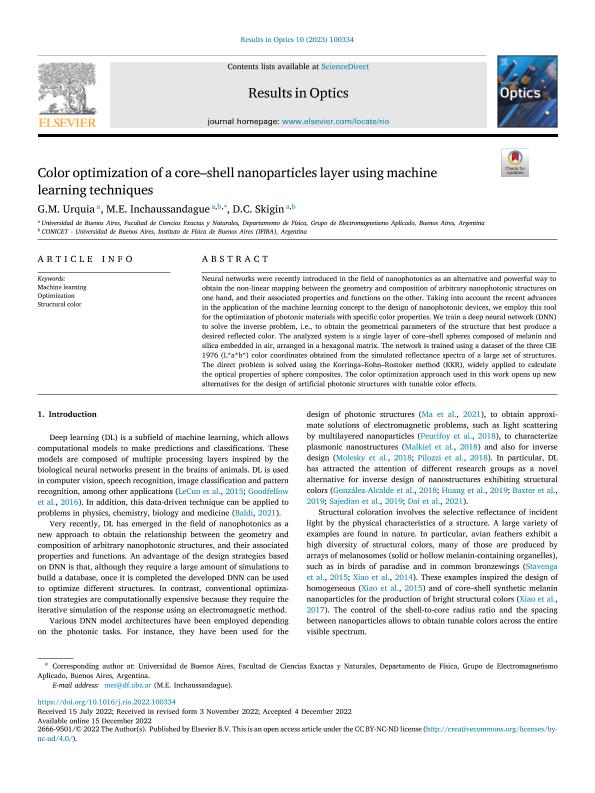Artículo
Color optimization of a core–shell nanoparticles layer using machine learning techniques
Fecha de publicación:
02/2023
Editorial:
Elsevier
Revista:
Results in Optics
ISSN:
2666-9501
Idioma:
Inglés
Tipo de recurso:
Artículo publicado
Clasificación temática:
Resumen
Neural networks were recently introduced in the field of nanophotonics as an alternative and powerful way to obtain the non-linear mapping between the geometry and composition of arbitrary nanophotonic structures on one hand, and their associated properties and functions on the other. Taking into account the recent advances in the application of the machine learning concept to the design of nanophotonic devices, we employ this tool for the optimization of photonic materials with specific color properties. We train a deep neural network (DNN) to solve the inverse problem, i.e., to obtain the geometrical parameters of the structure that best produce a desired reflected color. The analyzed system is a single layer of core–shell spheres composed of melanin and silica embedded in air, arranged in a hexagonal matrix. The network is trained using a dataset of the three CIE 1976 (L*a*b*) color coordinates obtained from the simulated reflectance spectra of a large set of structures. The direct problem is solved using the Korringa–Kohn–Rostoker method (KKR), widely applied to calculate the optical properties of sphere composites. The color optimization approach used in this work opens up new alternatives for the design of artificial photonic structures with tunable color effects.
Palabras clave:
MACHINE LEARNING
,
OPTIMIZATION
,
STRUCTURAL COLOR
Archivos asociados
Licencia
Identificadores
Colecciones
Articulos(IFIBA)
Articulos de INST.DE FISICA DE BUENOS AIRES
Articulos de INST.DE FISICA DE BUENOS AIRES
Citación
Urquia, Gonzalo Martin; Inchaussandague, Marina Elizabeth; Skigin, Diana Carina; Color optimization of a core–shell nanoparticles layer using machine learning techniques; Elsevier; Results in Optics; 10; 2-2023; 1-7
Compartir
Altmétricas




